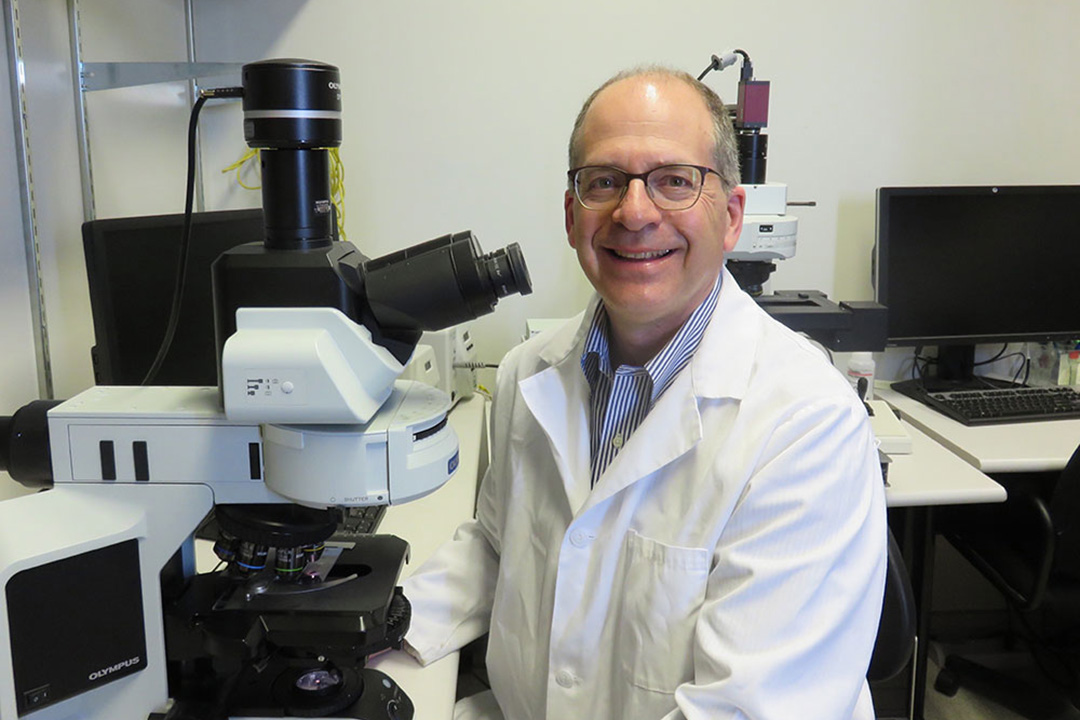
USask researchers take steps to develop new multiple sclerosis treatments
Research from a University of Saskatchewan (USask) College of Medicine team will help develop medications that can inhibit the nerve cell damage that occurs due to diseases such as multiple sclerosis (MS).
The research team has modelled the mechanisms by which a specific cell protein, A1, causes damage to nerve cells, expanding on previous USask research that discovered a link between nerve cell damage and the dysfunction of cell protein A1 in the brains of MS patients. The A1 protein is involved in numerous biological processes, including the development and function of neurons (nerve cells).
Saskatchewan has some of the highest MS rates in the world. Multiple sclerosis is a disorder of the central nervous system affecting the ability of the brain and spinal cord to communicate. This results in muscle weakness, a lack of muscle control, problems with vision and other neurological symptoms.
An estimated 3,700 people in the province are living with MS. There is currently no known cure.
“A1 dysfunction in nerve cells causes nerve cell death and damage, also known as ‘neurodegeneration’ in MS patients,” said Dr. Michael Levin (MD), USask College of Medicine professor and Saskatchewan MS Clinical Research Chair in Neurology, who led the project.
“Neurodegeneration is the reason why people with MS continue to get worsening neurologic symptoms, even when they are taking an MS medication.”
By developing knowledge of how the A1 cell protein causes damage to a neuron, the research team hopes to create medications that stop or prevent neurodegenerative processes.
“Our goal is to prevent neurodegeneration, and in doing so, improve the lives of persons living with MS,” said Levin.
In their latest paper published in eNeuro, in which the team modelled A1 protein dysfunction by genetically reducing the amount of A1 protein in nerve cells, the researchers demonstrated that A1 protein dysfunction causes a reduction in nerve cell growth. Nerve cell branches become shortened and cell-to-cell communication is then compromised, which may lead to neurologic symptoms seen in persons living with MS.
Other findings indicate there is an increase in cell toxicity levels from the displacement of A1 proteins, as well as disruptions to the cell’s ability to cope with stress.
Understanding that all three factors—compromised nerve cell function, increases in cell toxicity, and compromised stress adaptation of nerve cells—contribute to neurodegeneration in MS patients is crucial for designing treatments that can address these components.
The team is now focusing on testing medications to reverse neurodegeneration in nerve cells grown in the laboratory that mimic those found in MS patients.
“We are hopeful that this will lead to the discovery of medications that can be used in humans, which will inhibit neurodegeneration and improve the lives of persons living with MS,” said Levin.
Other USask researchers involved in the study include research assistants Amber Anees (MSc student), Hannah Salapa, Catherine Hutchinson and Dr. Patricia Thibault (PhD) from the USask College of Medicine Neurology Division.
The research was funded by the USask College of Medicine and the Saskatchewan Health Research Foundation.
Link to the publication: https://doi.org/10.1523/ENEURO.0350-21.2021

